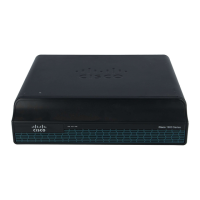2v
Cisco 3900 Series, Cisco 2900 Series, and Cisco 1900 Series Integrated Services Routers Generation 2 Software Configuration Guide
Chapter Preface
Conventions
Conventions
This document uses the following conventions:
Note Means reader take note.
Tip Means the following information will help you solve a problem.
Caution Means reader be careful. In this situation, you might perform an action that could result in equipment
damage or loss of data.
Appendix B
Using CompactFlash Memory Cards Describes how to use Advanced Capability CF
3
memory cards on the router.
Appendix C
Using ROM Monitor Describes how to use the ROM monitor to
manually load a system image, upgrade the
system image when there are no TFTP servers
or network connections, or prepare for disaster
recovery.
Appendix D
Changing the Configuration
Register Settings
Describes the 16-bit configuration register in
NVRAM and how to make changes to the
register settings using the Cisco IOS CLI.
1. PVDM3 = packet voice/data module
2. MGF = Multi-Gigabit Fabric.
3. CF = CompactFlash.
Convention Indication
bold font Commands and keywords and user-entered text appear in bold font.
italic font Document titles, new or emphasized terms, and arguments for which you supply
values are in italic font.
[ ] Elements in square brackets are optional.
{x | y | z } Required alternative keywords are grouped in braces and separated by
vertical bars.
[ x | y | z ] Optional alternative keywords are grouped in brackets and separated by
vertical bars.
string A nonquoted set of characters. Do not use quotation marks around the string or
the string will include the quotation marks.
courier font Terminal sessions and information the system displays appear in courier font.
< > Non-printing characters such as passwords are in angle brackets.
[ ] Default responses to system prompts are in square brackets.
!, # An exclamation point (!) or a pound sign (#) at the beginning of a line of code
indicates a comment line.

